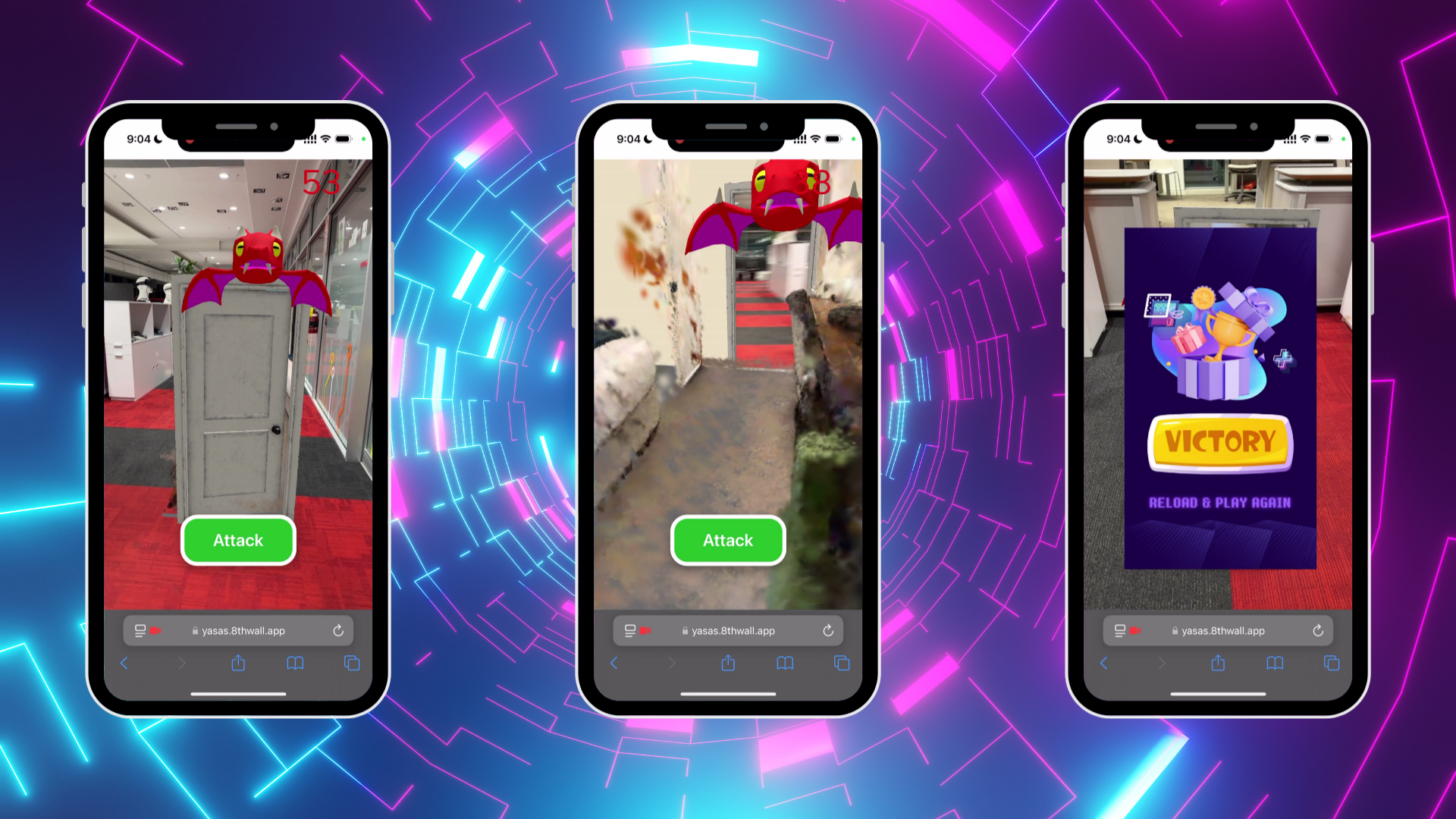8th Wall Blog
Behind the Build: Portal Hunter Adventure
Step into, discover, and explore a portal-powered WebAR world built with Niantic Studio

Yasas Sri Wickramasinghe’s Portal Hunter Adventure is an immersive WebAR game where players dive through portals into new locations, search for hidden objects, and defend themselves against enemies—all within a real-world environment enhanced by Gaussian splats and interactive gameplay mechanics. Built in Niantic Studio, the experience blends classic adventure mechanics with AR-native features like projectile launching, portal visibility control, and dynamic UI screens.
We spoke with Yasas about how this game evolved from a research concept to a playable experience, and what he learned along the way.
.png)
What inspired you to create Portal Hunter Adventure?
This experience was born out of my PhD research on connecting people to remote places through location-based augmented reality. I wanted to explore how digital interactions could make physical spaces more meaningful—both emotionally and socially.
The idea of portals felt like the perfect metaphor. I wanted players to feel like they were stepping into another world—one filled with hidden objects, challenges, and enemies to defeat. The mix of exploration and combat keeps the gameplay fresh, and the use of Gaussian Splats creates environments that feel both fantastical and grounded in reality.
How did Niantic Studio help bring your vision to life?
Niantic Studio was essential to making this project possible. The web-based editor allowed me to build anywhere—even on my iPad while traveling. The visual simulator made rapid iteration easy, letting me test and fine-tune mechanics in real-time.
I also found the sample projects super helpful. I started with the Door Portal sample project and modified it to fit my own needs. I didn't have to build everything from scratch—I could prototype quickly and focus on customizing gameplay.
The flexibility of Studio’s ECS system, combined with JavaScript support, gave me the control I needed to make each game mechanic modular and scalable.
What challenges did you face—and how did you solve them?
The biggest challenge was working with Gaussian Splats. Since the .spz format is still relatively new, it was difficult to rotate or crop scans precisely within Scaniverse. I had to get creative with bounding box workarounds and manual object placement inside the Studio.
I also leaned heavily on Studio’s 3D primitives to visually “mask” areas I didn’t want to be shown—essentially creating visual barriers where cropping wasn’t possible.
On the development side, I spent a lot of time learning how to make custom interactions with ECS. Niantic’s sample projects and support calls (shoutout to George!) were crucial to bridging my initial learning curve.

What were your key steps in building this project?
- Start with sample projects – I used the Door Portal sample project as a foundation. It saved me time and helped me learn the ECS architecture.
- Use Gaussian Splats thoughtfully – I captured scans in Scaniverse and optimized them for performance. Keeping file sizes small was essential—anything over ~10MB started affecting mobile responsiveness.
- Modularize game mechanics – I separated gameplay into components:
- portalHiderController toggled portal visibility
- GameManager handled the countdown and win/loss logic
- ProjectileSpawner and EnemyBehaviour created combat interactions
- Test often—especially on real devices – The simulator was great for fast iteration, but physical device testing helped catch bugs with audio, touch, and UI responsiveness.
What advice would you give other WebAR developers using Niantic Studio?
- Join the 8th Wall Forum – It’s a great place to troubleshoot, share ideas, and get feedback from the community.
- Use the sample projects– Starting from a blank canvas is hard. Learn from what's already working.
- Plan for performance – Optimize splats, compress models, and test across multiple devices.
- Design for movement – Encourage users to move in your AR space. It boosts immersion and engagement.
- Attend the webinars – I learned a ton from Niantic’s live sessions. They’re interactive and cover new features as they’re released.
Where do you see the future of AR going, and how does Niantic Studio fit into that vision?
AR is becoming a bridge between digital and physical spaces—not just for entertainment, but for education, tourism, and storytelling. My own research explores how AR can create meaningful experiences that connect people across distances.
Niantic Studio fits perfectly into this future. Its location-based tools and WebAR capabilities make it easy to reach a global audience without any app downloads. I see it becoming a go-to platform not just for developers, but for artists, educators, and creators of all kinds.
By making powerful tools more accessible, Niantic is helping shape a world where AR is part of everyday life—and that’s incredibly exciting.
Top Features in Portal Hunter Adventure
- DAR portal exploration: Step into a new space using Gaussian Splats and VPS.
- Combat mechanics: Shoot projectiles at enemies using tap interactions.
- Countdown-based challenge: Find hidden objects in 60 seconds or lose the round.
- Modular game design: Easily reusable components like GameManager and ProjectileSpawner.
- Dynamic UI feedback: Real-time timer, victory screen, and game-over logic.
Ready to explore the portals?
Portal Hunter Adventure demonstrates how Niantic Studio can bring immersive WebAR games to life. Clone it, remix it, or let it inspire your next project.
Want to get started? Create your free Niantic Studio account and start building today.
.png)